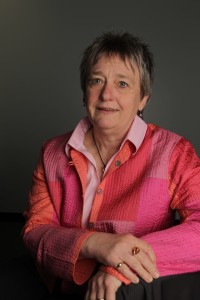Anita Bundy got her start in occupational therapy as a sophomore in high school, volunteering for a United Cerebral Palsy center in the Detroit area.
“I thought it was pretty fun,” she recalls. “It was a summer program for kids with cerebral palsy. I thought that’s what all OTs did.”
 The new head of Colorado State University’s highly ranked Department of Occupational Therapy has come a long way since then, but she still enjoys working with youth. In fact, her research specialties include the dynamics of child’s play and “risk reframing,” or being less protective of kids and giving them more freedom to explore consequences for themselves.
The new head of Colorado State University’s highly ranked Department of Occupational Therapy has come a long way since then, but she still enjoys working with youth. In fact, her research specialties include the dynamics of child’s play and “risk reframing,” or being less protective of kids and giving them more freedom to explore consequences for themselves.
Bundy, who succeeded interim department head Robert Gotshall at the beginning of the spring semester, is no stranger to CSU — she was a faculty member in the OT department from 1992 to 2002.
Early career
She got her bachelor’s degree in occupational therapy from Western Michigan University, then worked with special-needs children at a private rehabilitation center in Indiana and school districts in Michigan. After earning her master’s at Boston University, she joined BU’s OT department as an instructor, chipping away at her doctorate of science, which she earned in the late 1980s. She did a postdoc in anthropology at Northwestern University and spent a summer on the Navajo Reservation at Window Rock, Arizona. At the time, she also served on the editorial board of OTJR (formerly the Occupational Therapy Journal of Research). Peggy Short was the editor and also head of CSU’s OT department at the time.
“I asked her about any openings they had, and the next week I got a box of visitor’s materials about Fort Collins and CSU on my doorstep,” Bundy recalls with a laugh.
At CSU she climbed the ranks, gaining tenure and promotion to professor. But toward the end of that decade, she was recruited by the University of Sydney in Australia to be Chair of Occupation and Leisure Sciences (later renamed Occupational Therapy), a position she ended up holding for the next 13 years. Her research projects involved boosting kids’ activity levels and social negotiation skills through play. In addition to using risk reframing to get helicopter parents to stop hovering and just let their kids play, her research team made playground equipment from recycled materials like hay bales, old tires, milk crates and styrofoam coolers filled with sand, then observed how the objects affected children’s physical activity and social interaction. For instance, Bundy says, the heaviness of some items forced children to work together to move them.
“I used to tell the OTs in Sydney that if my research can get funded, anyone can get funded,” she quips.
Returning to CSU
Periodically, her former CSU colleagues would get in touch to gauge her interest in department openings, including as chair.
“I kept saying no,” Bundy remembers, smiling. “Then they caught me on a bad day.”
Kidding aside, she says she’s glad to be back in a program so highly regarded in rankings such as U.S. News and World Report, where CSU retained the number 6 spot of almost 400 programs nationally. One of Bundy’s goals is to continue broadening community awareness of what the OT field involves.
“It’s a way of thinking, it’s not about a particular population,” Bundy explains. “Occupation doesn’t mean your job in this case, it’s how you occupy your time.”
The Department of Occupational Therapy is in the College of Health and Human Sciences.